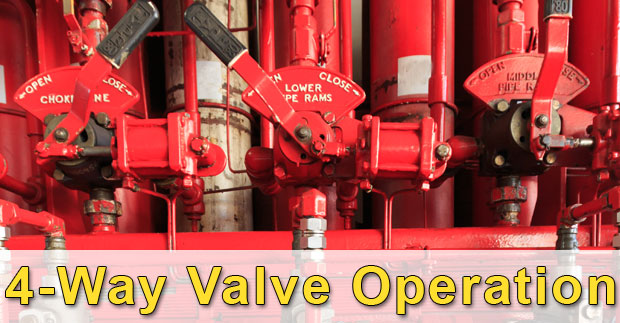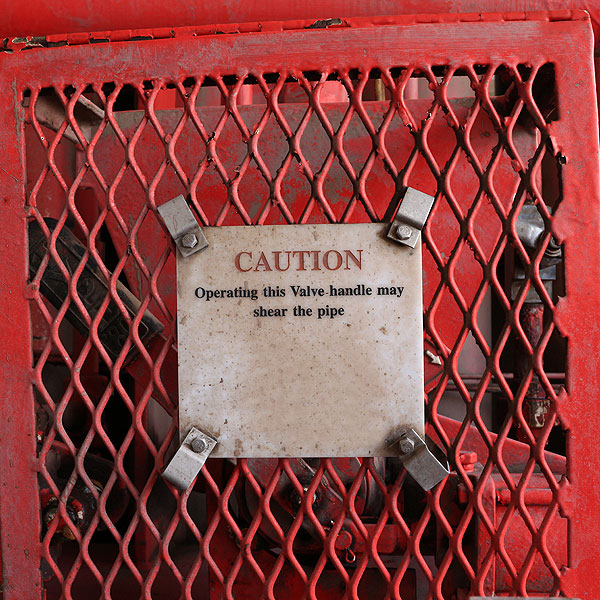4-way valves in the accumulator (Koomey) unit are used to control the position of Blow Out Preventer (BOP). Today we will go into the detail of 3 positions of 4-way vales in order to see how each position affects to the BOP.

Read more details about Koomey Unit here =>mechanism of Koomey unit.
Four-Way Vale in Open Position
When the valve is turned into the open position, it directs hydraulic pressure from the manifold into the BOP openning port therefore the BOP is in the open position. The hydraulic fluid in the ram closing chamber will return back to the reservoir tank. Figure 1 illustrates how the hydraulic pressure is lined up to open the BOP.

Figure 1 – Open position of the 4-way valve
Four-Way Vale in Closed Position
The valve is turned into the close position. It means that the hydraulic pressure from the manifold is transferred into the BOP close port. The hydraulic from the opening chamber will return back to the reservoir tank. Figure 2 shows how the hydraulic pressure is lined up to close the BOP.

Figure 2 – Closed position of the 4-way valve
Four-Way Vale in Block Position
When the four-way valve is left in the block position (central position – Figure 3), there is no hydraulic pressure going into either the “close” or “open” port in the BOP. You might not know exactly the position of the rams with the block position.

Figure 3 – Block position of the 4-way valve
In normal drilling operation, you should never leave in the block position. However, the valves can be left in the block position during rig move and repairing operation.
There is one special thing which personnel must consider about the handle of 4-way valve used to operation the bilnd/shear rams (Figure 4). The control handle must be protected to mitigate unintentional operation however it still allows to be remotely operated from the BOP remote control panel.

Figure 4 – Blind/shear ram 4-way valve handle
References
Cormack, D. (2007). An introduction to well control calculations for drilling operations. 1st ed. Texas: Springer.
Crumpton, H. (2010). Well Control for Completions and Interventions. 1st ed. Texas: Gulf Publishing.
Grace, R. (2003). Blowout and well control handbook [recurso electrónico]. 1st ed. Paises Bajos: Gulf Professional Pub.
Grace, R. and Cudd, B. (1994). Advanced blowout & well control. 1st ed. Houston: Gulf Publishing Company.
Watson, D., Brittenham, T. and Moore, P. (2003). Advanced well control. 1st ed. Richardson, Tex.: Society of Petroleum Engineers.








Kindly provide more literature on Koomey unit and its operation
Dear,
Why it called 4 way valve?
Ahmed,
I have no idea about this why they call 4-way valve.
Dear,
carefully look to the picture and you will understand why they called 4 way.
Hi Drilling formulas
Soory Iam wrong. some confusion to me
Regards
F.LAFI DSV.
Because it has 4 ports for fluid and 3 selection can be made, that’s why 3 position 4 way valve.